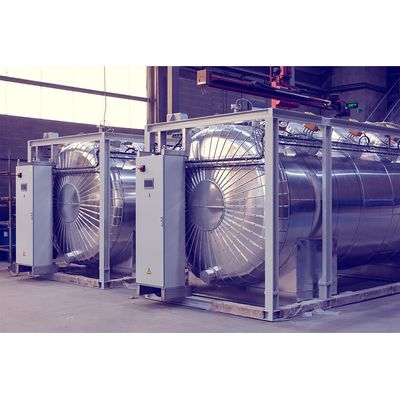


Heatcube
This is what it means to decarbonize
Why molten salt?
As a liquid, molten salt has a high volumetric capacity. It can hold a lot of heat, without taking up too much space. And it can do so without the risk and cost associated with highly pressurized steam vessels, while being non-flammable and non-toxic.
Commercially proven
Molten salt is currently the most mature technology for thermal storage at high temperatures. Compared to latent and thermochemical solutions, sensible heat storage with molten salt is a commercially proven technology for high temperature heat storage.
Provide value to TSO
More and more renewable energy sources are coming online, while stable fossil fuels are being phased out. This increases the value of grid stabilization. Charging a Kyotos Heatcube during off peak hours is not only shielding your business from price volatility. It also means power companies are receiving a service from you.
A Heatcube charged at off peak hours offsets the need for investment in grid infrastructure to handle peak demand. This also makes transmission system operators` job of balancing the grid, easier. When negotiating a power purchase agreeement, this is a bargaining chip for your company.
Ready for implementation
Many technologies are still being developed to deal with the need for renewable energy. Some solutions are more than a decade off in development, and maybe longer for commercial use. Kyoto Heatcube is ready to supply process heat for industry now.
Some fuels, like green hydrogen and green ammonia are better suited to supply the needs of transport and aviation. Lithium-ion batteries are very efficient for power companies and cars. None of these are likely to ever generate process heat. Electrification is the way forward.
